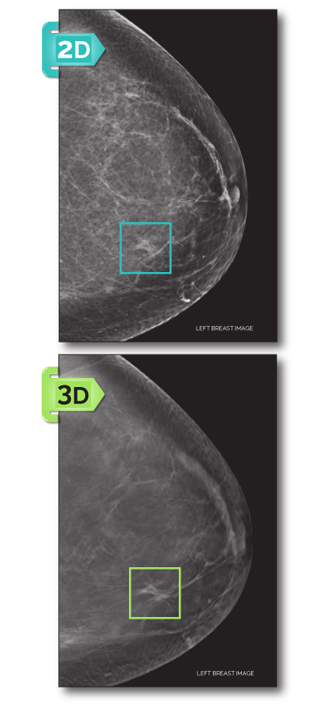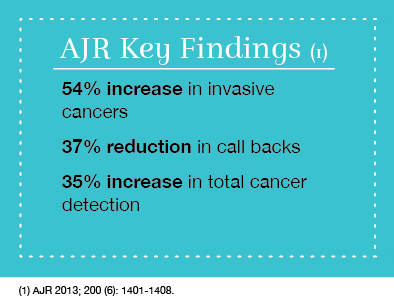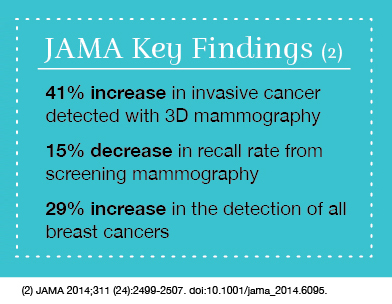What is a 3D Mammogram?
The radiologists at Austin Breast Imaging are experts in 3D mammography, or Digital Breast Tomosynthesis. Instead of static, traditional 2D mammograms, Tomosynthesis is added to the standard 2D mammogram resulting in multiple, thinly sliced images of the breast removing any overlapping structures from obscuring small tumors. The combined exam has been shown to reduce call backs for additional tests by 40 percent in our practice.
The greatest benefit of the 3D Mammogram is knowing your results are more accurate giving you peace of mind.
Tomosynthesis/3D mammograms can be used for screening almost everyone that would otherwise undergo screening mammography. This new technology, combined with the highly-trained and specialized breast imaging radiologist who will be reading the mammogram, will provide women with the peace of mind they deserve concerning their breast health. 3D Mammography (in combination with traditional digital mammography) has the potential to:
- 40 percent decrease in call backs which means less worry, anxiety and cost for patients
- Improve the selection of patients for biopsy
- Increase cancer detection rates, especially in patients with dense breasts
- Detects up to 54 percent more invasive cancers
Austin Breast Imaging provides you with the perfect combination of advanced technology and breast imaging expertise.




